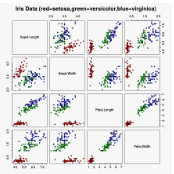The human footprint is having a unique set of ridges unmatched by any other human being, and therefore it can be used in different identity documents for example birth certificate, Indian biometric identification system AADHAR card, driving license, PAN card, and passport. There are many instances of the crime scene where an accused must walk around and left the footwear impressions as well as barefoot prints and therefore, it is very crucial to recovering the footprints from identifying the criminals. Footprint-based biometric is a considerably newer technique for personal identification. Fingerprints, retina, iris and face recognition are the methods most useful for attendance record of the person. This time the world is facing the problem of global terrorism. It is challenging to identify the terrorist because they are living as regular as the citizens do. Their soft target includes the industries of special interests such as defence, silicon and nanotechnology chip manufacturing units, pharmacy sectors. They pretend themselves as religious persons, so temples and other holy places, even in markets is in their targets. These are the places where one can obtain their footprints quickly. The gait itself is sufficient to predict the behaviour of the suspects. The present research is driven to identify the usefulness of footprint and gait as an alternative to personal identification.
翻译:人类足迹具有一套与任何其他人没有相配的独特山脊,因此可以用于不同的身份证件,例如出生证、印度生物鉴别身份系统AAADHAR身份证、驾驶执照、PAN卡和护照。犯罪现场有许多被告必须四处走动,留下鞋印和赤脚指纹,因此,对从辨认罪犯中找回脚印至关重要。基于脚印的生物鉴别技术是一种相当新的个人识别技术。指纹、视网膜、伊里斯和面部识别是个人出勤记录最有用的方法。此时,世界正面临全球恐怖主义问题,因为恐怖分子与公民一样生活正常,因此识别恐怖分子具有挑战性;其软目标包括国防、硅和纳米技术芯片制造单位、药房部门等特殊利益行业;他们假称自己是宗教人士,因此寺庙和其他圣地,甚至在市场上,都在他们的目标中。这些地方是人们能够迅速获得脚印的地点。这些地方本身足以预测嫌疑人的行踪迹。目前的研究是用来预测个人身份的。



